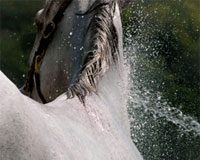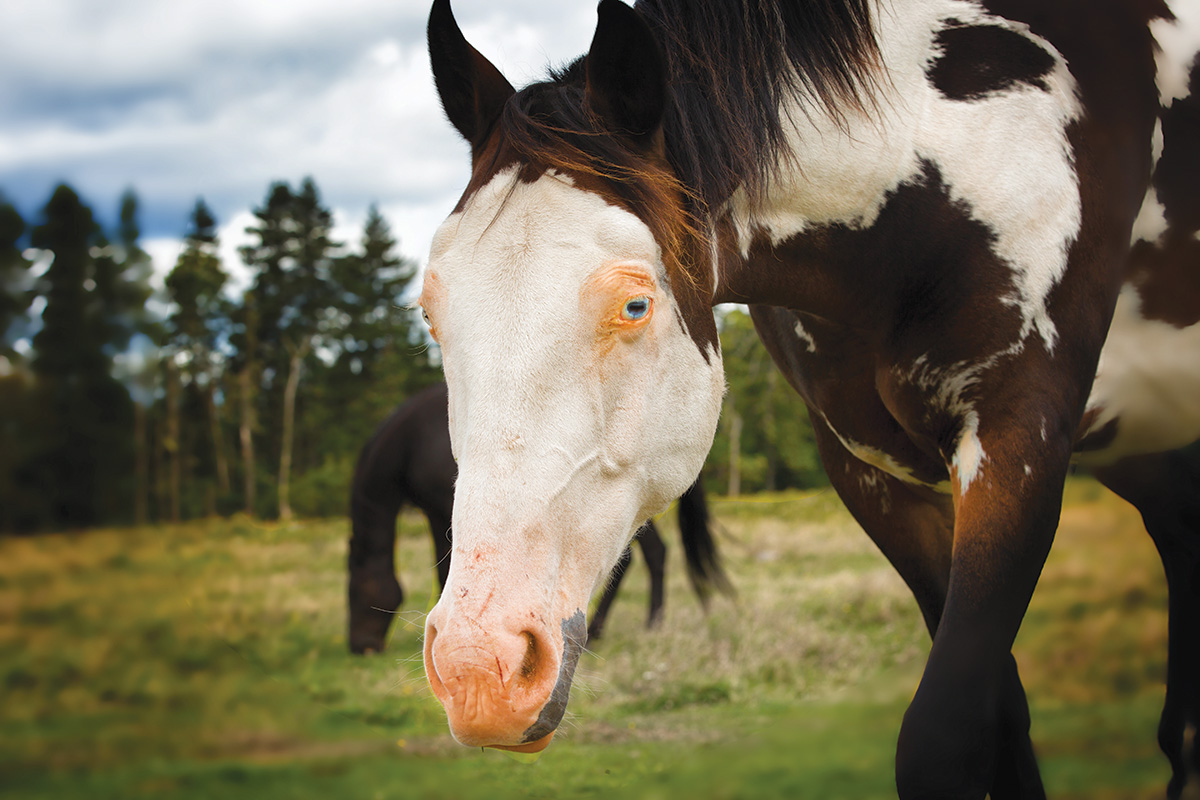
If you live in an area where sunlight is plentiful and horses spend hours outside, you’ve most likely seen white faces turn pink as warmer weather takes hold. Like humans, horses are susceptible to sunburn, which occurs when skin is exposed to too much ultraviolet (UV) light. Horses most likely to be affected by too much sun are those with white hair/pink skin on their faces and large swaths of white or lighter colors on their bodies, like Paint Horses and Appaloosas. Though most of us are familiar with sunburn and its manifestation in horses, there is an equine condition that causes what looks like sunburn on steroids, called photosensitization, or photosensitivity.
There are multiple types of photosensitivity; the type a horse is experiencing is classified by the source of the photodynamic compound. The kinds that most often impact horses are systemic photosensitivity (often called primary photosensitivity) and hepatogenous sensitivity (also called secondary photosensitivity).
No matter the cause, the signs of photosensitivity are similar, though the time between exposure and onset of signs may vary.
Feel the Burn
Photosensitization is often seen in summer months when sunlight is most intense and pasture grasses are thriving. Mild photosensitization or cases in early stages may be difficult to discern from sunburn, but advanced cases are easy to recognize.
Light and white areas of the horse affected by photosensitivity can often be so damaged that an owner may worry that the horse got tangled in something, like a wire fence. The skin can be red and blistered, as well as swollen and hot to the touch. Photosensitivity on the legs can also look like scratches (also known as dew poisoning, mud fever, greasy heel or pastern dermatitis).
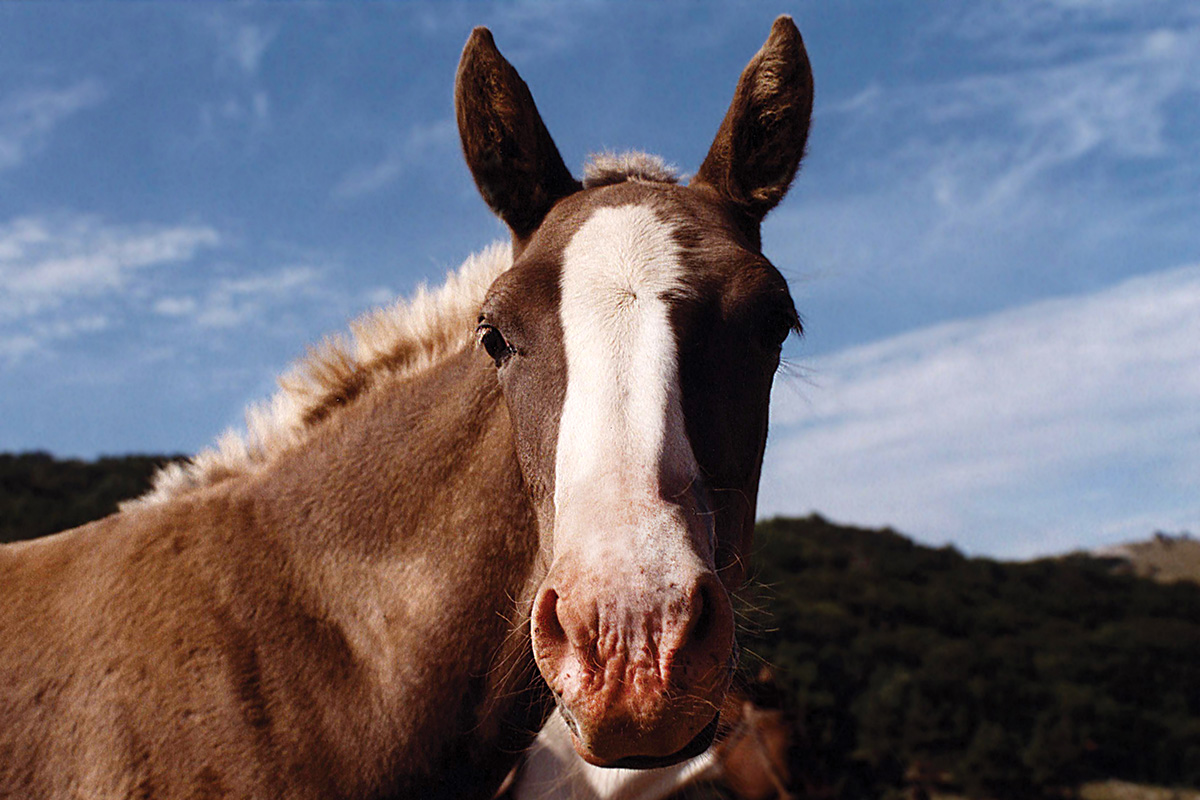
The blisters eventually break, leaving oozing, raw areas that will become crusty and eventually peel away. Horses experiencing photosensitivity may rub or scratch affected areas, further damaging skin. The wounds can easily become infected without diligent care.
Substances that cause photosensitization can be found in plants and drugs; some chemicals may also act photosensitizing agents. For horses, the compounds most often to blame are plant-derived.
Primary Photosensitivity in Horses
Primary photosensitivity takes place when a photodynamic agent has been ingested by the horse or injected into his body or absorbed through the skin. The agent then circulates throughout the bloodstream, but only causes skin cell damage when the horse is exposed to UV light.
One common pasture plant containing a toxin that can cause primary photosensitivity is alsike clover (Trifolium hybridum), which looks similar to red clover (Trifolium pretense) or white clover (Trifolium repens). Red and white clover are purposely planted for hay and pasture, so it’s important to identify which is which.
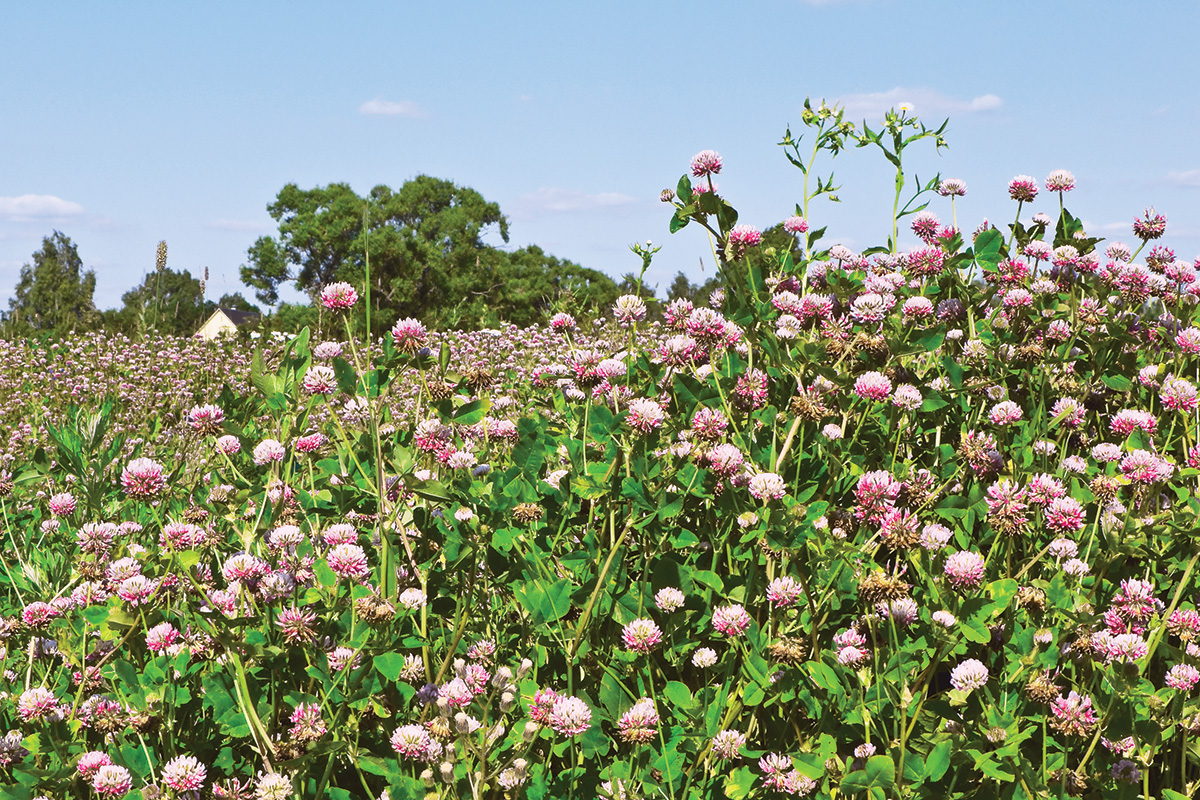
Other plants that can cause primary photosensitization are buckwheat, oatgrass, perennial ryegrass and St. John’s wort.
Many other plants (including other clovers and Bermudagrass) are suspected to cause primary photosensitization, but the specific toxins have not yet been identified. Hay made from any plants that cause photosensitivity may also cause a reaction, as the toxins are not destroyed by drying.
Certain drugs can also cause photosensitization, so a conversation with your horse’s veterinarian may be warranted if he is on any of the following: phenothiazine, some sulfonamides (like trimethoprim sulfa), and tetracycline.
Secondary Photosensitivity in Horses
Secondary photosensitivity is the most common photosensitivity found in horses; it takes place when a horse’s liver is compromised to the point where he can’t metabolize specific chemicals normally.
Liver damage can be caused by a myriad of things, but this type of photosensitivity often occurs when a horse ingests plants or blue-green algae that damage the liver, affecting its ability to remove photodynamic compounds from the bloodstream.
Horses most at risk of this type of photosensitization are turned out on pastures that are overgrazed and in poor condition. Oftentimes, more than one horse in a field will be affected by secondary photosensitization.
Some plants can cause both primary and secondary photosensitivity, but the more profound toxic effects, such as liver damage, come from the ingestion of plants that contain pyrrolizidine alkaloids (PAs). Plants with higher levels of PAs include buttercup, comfrey, heliotrope, kale, lanata and ragwort, among many others.
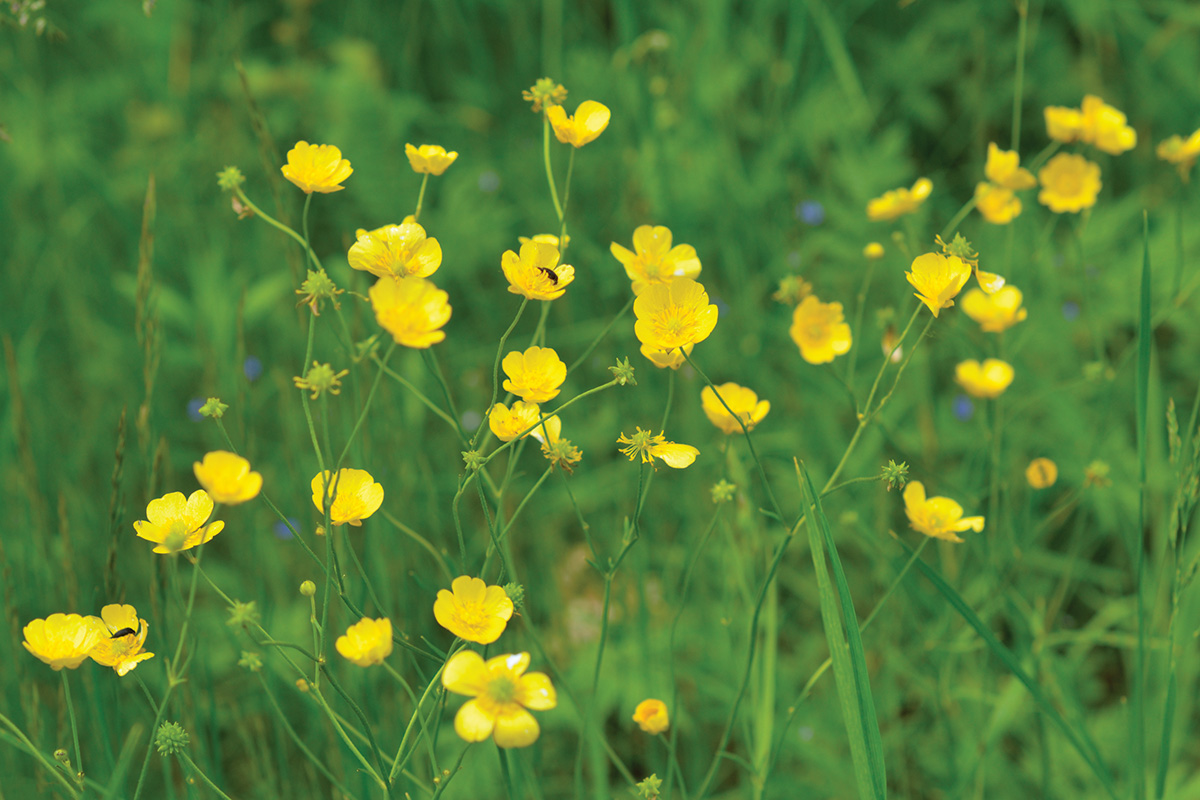
You should call a vet if your horse has no appetite, is lethargic or jaundiced, or is in poor body condition in addition to being sensitive to sunlight; these are all signs of liver damage. Additional diagnostic testing may be necessary to determine how impaired liver function is.
Treatment of Photosensitization
Treatment of the wounds caused by photosensitization is often simply management of symptoms while allowing the skin to heal. Horses experiencing photosensitization should be kept out of the sun and preferably off the pasture that caused the photosensitive reaction. The wounded area should be kept as clean as possible to minimize secondary skin infections, and it is critical to keep flies at bay.
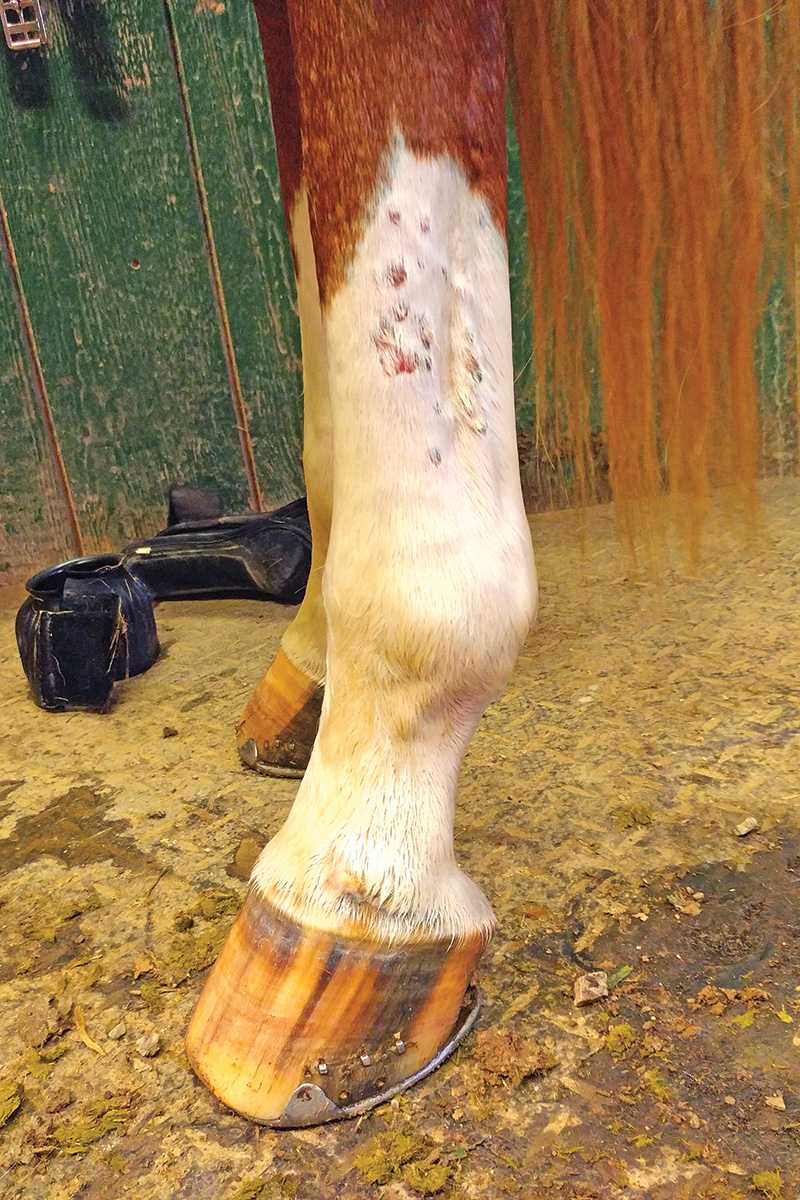
Gentle cleaning of the affected area is recommended; scabs covering the damaged skin should be left alone because picking or removing them could prolong healing and encourage infection. A vet may prescribe steroids to relieve some of the inflammation or an antibiotic if the infection is severe.
Prevention of Photosensitization
Owners of horses with lots of chrome should be diligent in their assessment of white legs and faces (as well as bodies). It’s much easier to heal lesions caused by photosensitivity if the wounds are caught early, but it’s even better to keep sun-related injuries at bay. Try the following:
◆ Use a child-safe sunblock on the areas of the horse that are likely to burn, like around noses and eyes. As always, the higher the SPF number, the more protection the product will offer.
◆ Apply a diaper rash cream, which contains zinc oxide. The sticky product often stays in place longer than traditional sunscreens when the horse grazes in taller grass. An added bonus: These creams are so thick that an owner can tell if a spot was missed during application and bare skin remains exposed.
◆ Consider using shampoos, coat care products and fly sprays that tout their ability to help block sunlight. Remember that these products may not adequately protect a horse’s skin when used alone.
◆ Use fly masks with ear or muzzle coverings; if using a fly sheet or fly boots, opt for products with UV protection.
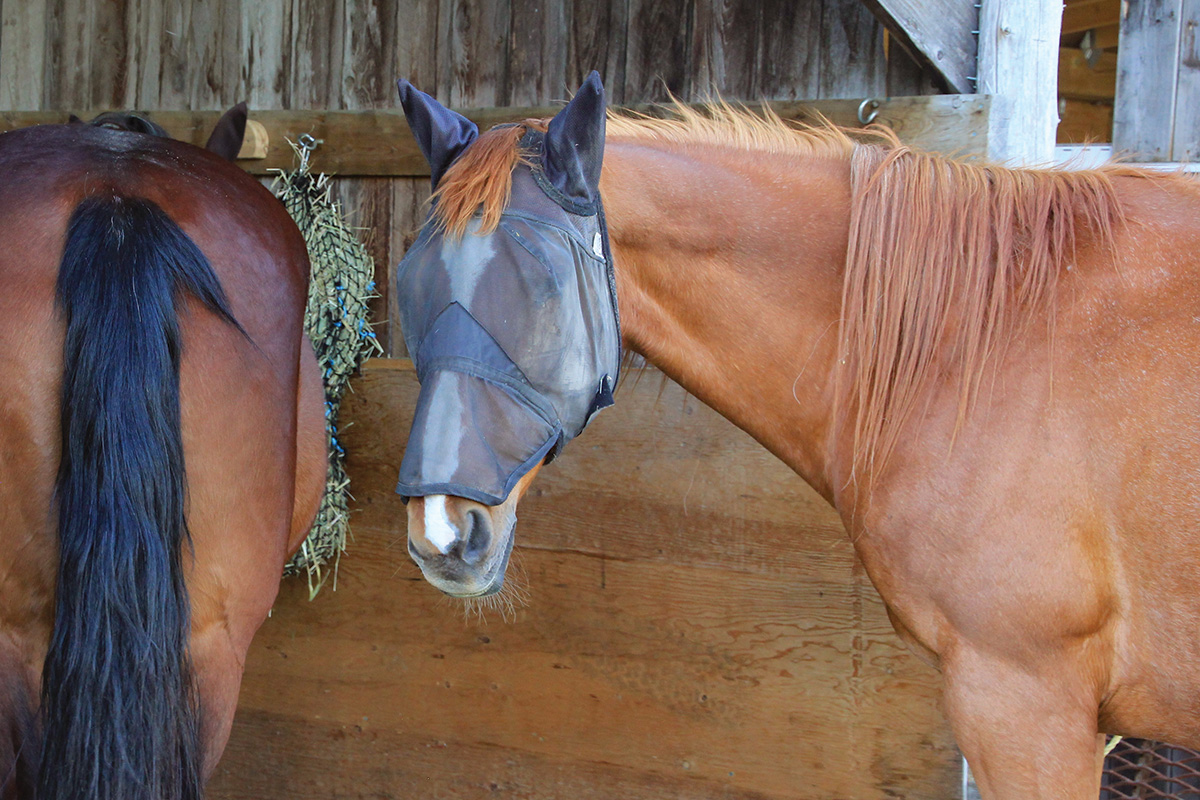
The wounds and pain caused by photosensitization can be significant and the healing process arduous. Though the cause may never be clear, the owner of any horse who has experienced a photosensitive episode will remain diligent in their monitoring of white patches to try to prevent it from happening again.
Removing Common Culprits of Photosensitization
Alsike clover and St. John’s wort are common causes of photosensitivity in horses, and their management in fields can be key to preventing repeat occurrences.
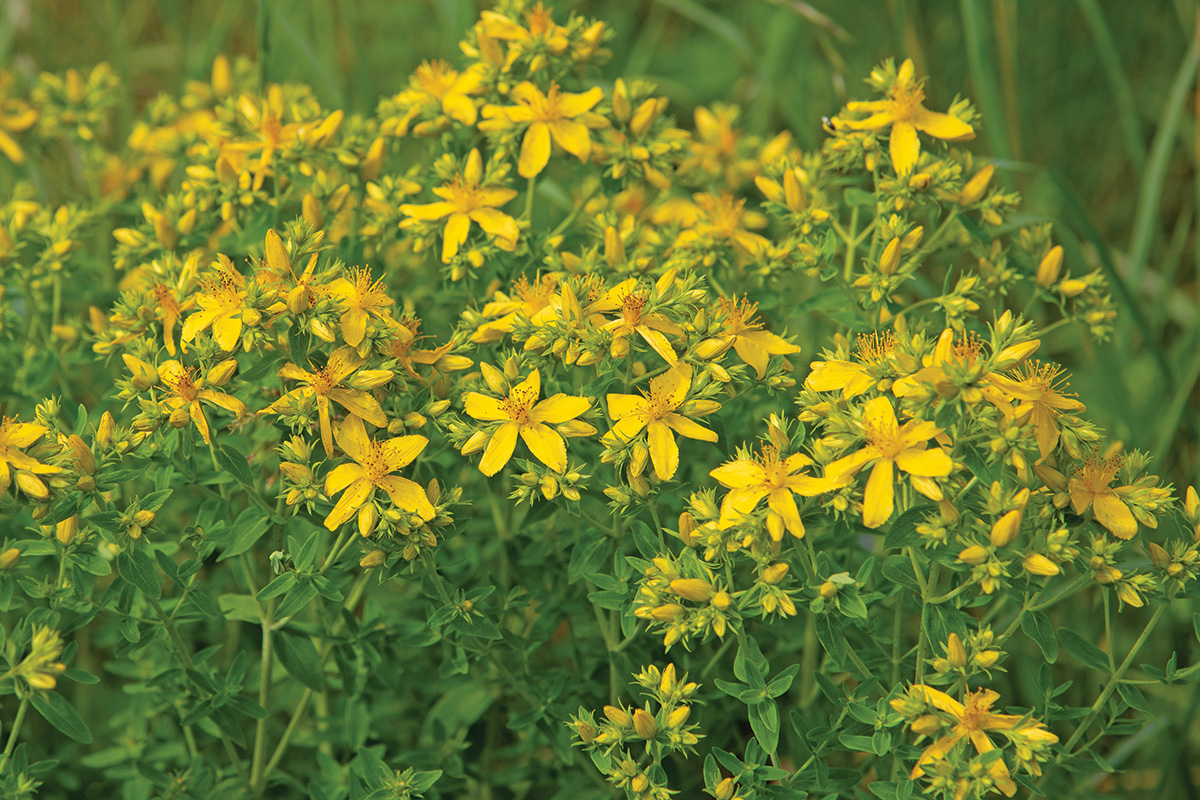
If alsike clover hasn’t taken over a field, it can be sprayed or removed by hand. However, if the pasture is infested, complete renovation should be considered to prevent the ongoing ingestion of the plant by horses.
St. John’s Wort spreads both by seed and underground rhizome, so it can be difficult to eradicate manually or with herbicide application. It’s also resistant to many herbicides, so a call to your local extension agent may be needed to get advice on how to eliminate it from fields. Biological controls like flea beetles, moths and midges have been used to kill St. John’s Wort, as they ingest the foliage but don’t harm other pasture grasses.
If you suspect a problem or the wounds have gotten severe, contact your vet for advice on an immediate treatment protocol.
This article about photosensitivity in horses appeared in the July 2022 issue of Horse Illustrated magazine. Click here to subscribe!




